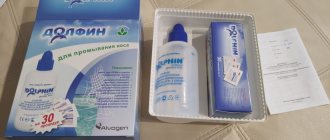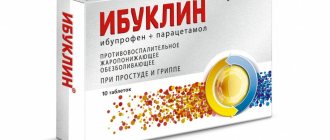How to cure a runny nose? Yandex, Google, thousands of doctors and pharmacists answer this question countless times every day. A runny nose (or rhinitis) is an inflammation of the nasal mucosa due to exposure to cold, bacteria or viruses, and the influence of allergens. The cells of the mucous membrane constantly produce secretions that protect the respiratory organs from adverse effects. When this secretion becomes too much and snot flows like a stream, we realize that we are sick and begin to look for remedies for rhinitis.
How to cure a runny nose when there is absolutely no time to get sick?
How to treat a runny nose: the best drops and sprays.
June 16, 2021
19542
4.3
1
Content
- Causes and symptoms of a runny nose
- Remedies for the common cold: what are they?
- Top 7 best remedies for runny nose
- Aqua Maris Plus
- Galazolin
- Nazivin
- Isofra
- Sanorin
- Vibrocil
The most unpleasant thing during a cold, besides fever, is, of course, nasal congestion. When we cannot breathe normally, it interferes with both normal work and proper sleep. What will help get rid of a runny nose? Here is our list of the most effective drugs for rhinitis.
Causes and symptoms of a runny nose
Among the main causes of runny nose
the following can be distinguished:
- hypothermia (cold rhinitis);
- infection (bacteria or viruses) entering the body;
- allergens (plant pollen, household dust, animal hair, chemicals, etc.);
- hormonal disorders.
Symptoms of a runny nose:
- the nose does not breathe freely;
- possible frequent sneezing;
- ears are blocked;
- headache;
- burning and dryness in the nose;
- severe nasal congestion;
- no sensitivity to odors;
- mucous discharge from the nose.
How to cure chronic runny nose?
To determine the cause of a chronic runny nose, you need to do:
- rhinoscopy, x-ray or tomography of the paranasal sinuses - this will help to find out whether there is pus in them and where it is localized;
- general and biochemical blood tests, general urine analysis;
- allergy tests, studies on the levels of immunoglobulins in the blood;
- bacterial cultures from the nose, nasopharynx, and tonsils.
After the doctor finds out the cause of the runny nose, he prescribes antibacterial or antihistamines, explains how to cleanse your nose in your case, and recommends physiotherapy.
Medicines for prolonged rhinitis are selected after a thorough examination
Remedies for the common cold: what are they?
Depending on the causes of the runny nose, you need to choose the right remedy to treat it. By the way, some drops for the common cold (antibacterial and hormonal) are sold in pharmacies with a prescription. They have certain side effects, so such remedies for the common cold should only be prescribed by a doctor. So, what are the remedies for treating a runny nose?
- Means for rinsing the nose.
Such solutions have antimicrobial, anti-inflammatory and antiseptic effects. By the way, you can prepare them yourself (a weak aqueous solution of soda, soda or furatsilin, chamomile decoction, etc.). Or you can buy a ready-made drug at the pharmacy: miramistin, saline solution, chlorhexidine. When you have a runny nose, seawater-based products are also very popular for rinsing the nose - they reduce swelling and improve breathing. - Vasoconstrictors.
Such drops and sprays for a runny nose constrict the vessels of the nasal mucosa, thereby reducing their permeability and relieving swelling. Vasoconstrictor nasal drops are prescribed for vasomotor, infectious or allergic rhinitis, but for a short period of time. If you use vasoconstrictor drops for a long time, addiction occurs. - Antiallergic (antihistamine).
Such remedies for the common cold protect cells from destruction, which releases histamine (a substance that provokes an allergic reaction). Allergic rhinitis is usually treated with tablets, but nasal drops are also available. You can also combine: tablets and drops for allergies.
The most unpleasant thing during a cold or allergy is nasal congestionGetty Images/Brand X
- Antibacterial.
Such drops or sprays for a runny nose are prescribed only if the cause of a runny nose is a bacterial infection. Treating viral or allergic rhinitis with antibacterial drops is not only useless, but also dangerous. Antibacterial nasal drops are usually only available with a prescription and can only be prescribed by a doctor. So don’t self-medicate to avoid harming yourself! - Hormonal.
Similar remedies for the common cold are used if a person has a severe form of allergic rhinitis due to inflammation of the paranasal sinuses. Hormonal nasal drops are not addictive, but have a bunch of side effects. Therefore, only a doctor prescribes such drugs for the common cold. - Combined.
Such remedies for the common cold contain active substances aimed at eliminating several problems. For example, they constrict blood vessels and relieve an allergic reaction. These drugs for the common cold are good because you buy one product instead of two or three. But if it contains a hormone or antibiotic, you will need a prescription from a doctor.
How to cure allergic rhinitis?
Combating allergic rhinitis requires not only the use of nasal decongestants, but also lifestyle changes. The main rule is to completely eliminate the influence of the allergen on the body or reduce contact with it to a minimum. To do this you need:
- if you are allergic to pollen or grass, go outside as little as possible and visit green areas, especially when plants are in flowering;
- at the peak time for the concentration of allergens in the air, cover open windows with damp gauze and periodically renew it;
- wear glasses, gloves, closed clothing;
- frequently rinse your nose with saline solutions and rinse your mouth;
- after each walk, take a shower and put on new clothes;
- do wet cleaning as often as possible;
- purify the air with filters;
- dry washed items indoors and not on the balcony;
- exclude the most allergenic foods from the diet: nuts, strawberries, tomatoes, honey, eggs, seafood, chocolate, citrus fruits, certain types of fish.
The most reliable remedy for allergic rhinitis is to eliminate the allergen
Medications against runny nose caused by allergens:
- Antihistamines. They can be used as nasal sprays, drops or tablets. Sprays have minimal side effects. Drops and tablets systemically block the allergic reaction.
- Glucocorticoids. For allergies, these substances are applied topically to eliminate inflammation. They are prescribed in combination with antihistamines and even in cases where they are ineffective. Modern glucocorticoids (for example, drugs with the active ingredient mometasone furoate Nasonex sinus, Flix) can be used for a long time without fear of developing addiction.
If you have passed a lot of tests, and doctors still do not understand how to cure your persistent runny nose, consult a gastroenterologist. Perhaps the swelling of the mucous membrane is caused by malfunctions of the digestive system.
Please note: when your nose is stuffy, you should not:
- draw mucus in and swallow it. It contains viruses, bacteria, inflammatory products that should be removed from the body, and not “run further”;
- Prevent sneezing by pinching your nose. If a reflex sneeze cannot be avoided, mucus will go into the ears, and otitis will be added to the runny nose;
- use cloth handkerchiefs. It is better to use soft disposable paper napkins and wash your hands and face after blowing your nose.
Use disposable handkerchiefs - they are hygienic
Aqua Maris Plus
This remedy for the common cold is excellent for maintaining the physiological state of the nasal mucosa. "Aqua Maris Plus" for the nose is created on the basis of sterilized water of the Adriatic Sea with natural microelements. The drug thins mucus and normalizes its production. Microelements in the composition of Aqua Maris nasal drops improve the functioning of the ciliated epithelium, relieve inflammation in the nose, cleanse the mucous membrane and restore it. Aqua Maris Plus, a remedy for the common cold, washes away allergens from the nasal mucosa and reduces inflammation. For hygienic purposes, drops are used to cleanse the nasal mucosa from street and house dust, as well as to moisturize the mucous membrane and soften crusts in the nose in children.
"Aqua Maris" is prescribed for acute and chronic inflammatory processes of the paranasal sinuses, adenoiditis, after operations on the nasal cavity, for vasomotor and allergic rhinitis, during pregnancy and breastfeeding, for dry nasal mucosa in air-conditioned rooms or during the heating season , in dusty rooms, etc.
Aqua Maris Plus
Jadran-Galenski Laboratories, Croatia
For the treatment and prevention of atrophic and subatrophic rhinitis;
- for cleansing and moisturizing the nasal mucosa in inflammatory diseases of the nasal cavity, sinuses and nasopharynx, incl. pregnant women and during lactation; - in the complex therapy of allergic and vasomotor rhinitis (especially for persons predisposed or suffering from hypersensitivity to drugs, including pregnant women and during lactation); — for the prevention of infections of the nasal cavity in the autumn-winter period (including for pregnant women and during lactation); - patients suffering from dry nasal mucosa and persons living and working in rooms with air conditioning and/or central heating, in order to preserve the physiological characteristics of the nasal mucosa in altered microclimatic conditions; — people whose mucous membranes of the upper respiratory tract are constantly exposed to harmful influences (smokers, vehicle drivers, people working over 400
5.0 1 review
601
- Like
- Write a review
Variety of types of runny nose.
There are many types of runny nose: vasomotor, allergic, infectious, medicinal, meteorological, traumatic, hypertrophic and atrophic. Let's talk about each of them in more detail. Vasomotor runny nose or “vascular dance” is caused by dilation of blood vessels and occurs under the influence of various reasons: emotional experiences, hormonal disorders, tobacco smoke, exhaust gases, spicy or hot food. This runny nose is manifested by attacks of copious mucous and mucous-watery discharge, congestion of one or the other nostril, sneezing, tearfulness, heaviness in the head, and sometimes headache. In the chronic course of the process, the patient is often worried about weakness, increased fatigue, insomnia, irritability, sweating, memory loss, palpitations, and high blood pressure. Allergic rhinitis occupies a special place. Every year the number of such patients increases throughout the world. The disease occurs under the influence of any allergen. For example, if plant pollen acts as an allergen, then we are talking about a seasonal disease that occurs during the flowering period of plants. There is a plant flowering calendar, knowing which, the patient can avoid the disease by first taking a course of prevention. This type of runny nose is called seasonal allergic rhinitis. A runny nose can develop as a reaction to certain foods, house dust, fluff, feathers, animal hair, etc. Such a runny nose begins and lasts throughout the year and is called year-round allergic. Over time, the patient may develop polyallergy - a reaction to different allergens, so it is important to start treatment as early as possible. The complaints of patients are numerous and varied, but all of them experience the so-called “classic triad”: difficulty breathing through the nose, sneezing and copious mucous-watery discharge. Such patients are called “sneezers” and “sniffles.” Along with these symptoms, the patient begins to experience itching, burning and tingling in the nose. There is a desire to scratch the tip of the nose, the so-called “allergic fireworks”. They say that the eye is a piece of the brain brought to the periphery, and one can also say that the nose is a piece of the lung brought to the periphery. Starting from the upper respiratory tract, the allergic process descends to the lower parts of the respiratory system and contributes to the development of a serious disease - bronchial asthma. Therefore, it is important to promptly identify this disease and begin treatment. An infectious runny nose can be viral, bacterial, mycotic (caused by the development of fungal flora). As a rule, an infectious runny nose occurs with various diseases: influenza, ARVI, measles, scarlet fever, diphtheria, gonorrhea, etc. Regardless of the cause, a runny nose can occur normally or have some characteristic specificity characteristic of the underlying disease. Only a specialist can catch and recognize these differences. With a common acute runny nose, it is customary to distinguish three stages. The first stage lasts from several hours to 2 days. A person is bothered by a burning sensation, itching, or unusual dryness in the nose. Often these phenomena spread to the pharynx and larynx, resulting in the development of laryngitis and laryngotracheitis. The temperature may remain normal or may rise. The second stage is characterized by the appearance of copious mucous discharge, externally light and transparent. Irritation and redness of the skin around the nostrils appears. At the same time, difficulty in nasal breathing begins to bother me. Sleep becomes restless, and by morning, due to constant breathing through the mouth, the throat feels dry. The perception of smells is impaired or completely stopped. In the third stage, the patient's condition becomes easier. The nature of the discharge in the nose changes - it takes on a mucopurulent appearance and is no longer so abundant. Nasal congestion decreases, heaviness in the head and headaches cease to bother you. Functionality is restored. Typically, recovery occurs approximately 7-8 days after the first signs of an acute runny nose appear. If recovery does not occur, then you can think about the development of complications, such as sinusitis, nasopharyngitis, otitis media, etc. Particular attention should be paid to the course of the runny nose in newborns and infants. What comes first for them is not impaired nasal breathing, but general symptoms, such as increased body temperature (sometimes up to 39 degrees and above), nausea, vomiting, and insomnia. A runny nose in young children should always be regarded as a disease that is fraught with the development of various complications, sometimes life-threatening. Inflammation of the nasal cavity in children is usually combined with inflammation of the pharynx, larynx, and bronchi, which affects the general condition of the child. The swelling of the mucous membrane is so pronounced that the child stops breathing through the nose, and breathing through the mouth is accompanied by swallowing air. As a result, the act of sucking is disrupted during feeding. Impaired breathing leads to increased intracranial pressure and irritation of the meninges. Drug-induced runny nose is caused by long-term use of vasoconstrictor drugs. As a rule, with constant nasal congestion, most people seek relief at the pharmacy. Advertising persistently offers more and more new means for normalizing nasal breathing in the form of drops and sprays (Galazolin, Sanorin, Naphthyzin, Xymelin, Tizin, Pinosol, etc.). After instillation, the nasal mucosa is significantly reduced in volume and breathing improves. But after some time, the effect of the drops ends, and swelling of the mucous membrane occurs with renewed vigor, so to restore breathing it is necessary to instill the medicine again. This is where the danger lies in the form of addiction, the so-called “drug dependence”. Traumatic runny nose is caused by mechanical, thermal (burn or frostbite) or chemical injury. Hypertrophic rhinitis is characterized by tissue proliferation (mucous membrane and submucosal layer). Complaints about the presence of constant discharge, often mucopurulent, breathing is constantly difficult. After instilling the drops, improvement occurs for a short period of time. With such a runny nose, there is only one treatment method - surgery. Atrophic or subatrophic runny nose is caused by thinning, atrophy of the mucous membrane, and sometimes the bony skeleton of the nose. Dry nose, constant crusting, deterioration of smell, sometimes a feeling of rawness and burning in the nose are the “companions” of this type of runny nose. That's how many different types of runny nose there are. And they are all treated differently, so you should not self-medicate, but should consult a specialist who can understand the causes of a runny nose and provide competent treatment.
Galazolin
Galazolin nasal drops are great help even with a severe runny nose, when it is difficult to breathe. This remedy for the common cold helps to quickly relieve nasal congestion, reducing swelling of the mucous membrane. “Galazolin” for a runny nose is suitable as an “ambulance” for a runny nose if your nose is stuffy in the evening, but you can only get to the doctor in the morning. "Galazolin" relieves inflammation of the Eustachian tube and widens the passages so that air can pass freely. After using these drops for a runny nose, breathing immediately improves without producing a lot of mucus. The positive effect lasts about six hours. At the same time, doctors do not recommend using Galazolin nasal drops for a long time, so as not to develop an addictive effect.
The active substance of this remedy for the common cold is xylometazoline hydrochloride. Allergies to it do not develop, so even pregnant and lactating women can use Galazolin. If you follow the correct dosage of the drug, the active substance is practically not absorbed into the blood.
Galazolin
Medana Pharma SA (Medana Pharma), Poland
Under the influence of Galazolin, arterial vessels narrow.
As a result, the swelling of the mucous membrane of the nasal passages decreases, and the amount of discharge decreases. Relieving swelling helps restore patency of the nasal passages, Eustachian tube and sinus openings. After using Galazolin, the effect develops after 5-10 minutes. The duration of the vasoconstrictor effect is 8-12 hours. If the dosage is observed, clinically significant absorption of the drug is usually not observed. from 28
5.0 1 review
915
- Like
- Write a review
From swelling to shock
Article on the topic Infectious, allergic, atrophic... What other type of runny nose is there?
According to research, more than 70% of people suffering from cold rhinitis (as this symptom is called) are women living in large cities. Most of them regard a runny nose, which occurs only on the street and disappears without a trace in a warm room, as just a minor inconvenience. And therefore they prefer not to undergo treatment, but to adapt, for which they always take a pack of paper tissues with them for a walk. But it’s better not to be lazy and get examined. After all, if these symptoms are left unattended, cold allergies will continue to develop. In addition to a runny nose, cold urticaria (blisters on the skin) and dermatitis (peeling, redness), swelling of exposed parts of the body, burning and conjunctivitis of the eye mucosa, severe shortness of breath and an attack of suffocation in the cold, as well as low blood pressure may appear. The most dangerous complications are anaphylactic shock and laryngeal edema, which can lead to death.
Nazivin
This remedy for the common cold is available in several versions: in the usual dosage, for children of different ages, for those who suffer from allergies or are prone to it. “Nazivin” perfectly treats a runny nose, having a vasoconstrictor effect, and it acts immediately after use - the nose begins to breathe normally, health improves, and the secretion of mucus from the nose decreases. Ear congestion, which so often accompanies a runny nose, goes away. "Nasivin" for the nose helps prevent the development of otitis, sinusitis or eustacheitis.
These drops and nasal spray contain the optimal concentration of the active substance (oxymetazoline hydrochloride), which helps prevent addiction to Nazivin. After one instillation, the positive effect lasts for about 12 hours. But you need to be careful and not overdose on Nazivin (this can cause even more nasal congestion and even increased blood pressure).
Nazivin
Merkle GmbH, Germany
— treatment of acute respiratory diseases accompanied by rhinitis;
- allergic rhinitis; - vasomotor rhinitis; — restoration of drainage in case of inflammation of the paranasal sinuses, eustachitis, otitis media; — elimination of edema before diagnostic manipulations in the nasal passages. from 120
5.0 1 review
829
- Like
- Write a review
Treatment with Aqualor
- The Aqualor line of drugs is not addictive.
- In their composition, isotonic forms are close to the physiological fluids of the human body; they do not cause irritation, tingling or other unpleasant sensations, which is especially important when treating children.
- The Aqualor line includes several forms of the drug, this allows you to select the drug of the desired concentration and strength of effect.
- The medicine is available in a convenient form, you can carry it with you and use it not only at home, but also at work, at school, and while traveling.
Medicines for chronic runny nose Aqualor help in clearing the nasal cavity of mucus and restoring nasal breathing. The decongestant effect of Aqualor Forte helps reduce congestion and has no side effects. When used regularly to rinse the nasopharynx, this is an excellent means of preventing both acute and chronic runny nose.
Isofra
Isofra nasal spray is an antibiotic that fights infections in the nasal mucosa and paranasal sinuses. The nasal spray has a convenient dispenser - thanks to this, the active substance (framycetin sulfate) is evenly distributed inside the nose and penetrates into hard-to-reach places. Isofra nasal spray can be used as the only remedy for the treatment of bacterial rhinitis, or as part of complex therapy.
A remedy for the runny nose is prescribed for rhinitis, sinusitis, sinusitis, nasopharyngitis and other complications of the runny nose. Isofra is often prescribed as a prophylaxis after nasal surgery, when general immunity is reduced.
Isofra
Laboratories Bouchard-Recordati, France
As part of combination therapy for infectious and inflammatory diseases of the upper respiratory tract, including: - rhinitis;
- rhinopharyngitis; - sinusitis (in the absence of damage to the septum). Prevention and treatment of inflammatory processes after surgery. from 220
822
- Like
- Write a review
How to make an appointment with a specialist?
JSC "Medicine" (clinic of Academician Roitberg) is a large modern medical center, within the walls of which the best specialists of Moscow and the region are gathered. With many years of experience, they do not forget to regularly update their knowledge and participate in popular international medical symposia. They know exactly how to treat a runny nose and will do everything possible to get rid of it as soon as possible.
You can make an appointment by calling 24/7 or leaving a request in the feedback form on the clinic’s official website.
Sanorin
These drops for runny nose help reduce the symptoms of rhinitis literally from the first use. Sanorin can completely cure a runny nose in about five days. The active substance of “Sanorin” for the nose is naphazoline nitrate, it constricts blood vessels, reduces the secretion of snot, drying out the mucous membrane.
"Sanorin" can be bought in the form of drops, spray or emulsion. This remedy for the common cold helps with chronic rhinitis, sinusitis, sinusitis and other problems with the nasopharynx. Sanorin drops may contain eucalyptus oil or aloe extract. But it should be noted that this drug for the common cold is contraindicated for those who have high blood pressure, a tendency to tachycardia, any problems with blood vessels, or eye diseases. The maximum course of treatment with Sanorin is seven days (for children - no more than three days).
Sanorin
TEVA, Ukraine
Sanorin is a vasoconstrictor drug for topical use in ENT practice.
Alpha2-adrenergic agonist. When applied topically, it has a rapid, pronounced and long-lasting vasoconstrictor effect on the vessels of the mucous membrane (reduces swelling, hyperemia, exudation). Facilitates nasal breathing during rhinitis and reduces swelling during conjunctivitis. After 5-7 days, tolerance occurs. from 55
649
- Like
- Write a review
Why does a runny nose occur?
Under normal conditions, a person breathes through the nose. This path of air entering our body is specially designed to provide the greatest possible protection from the troubles that the atmosphere can present to us. In the nasal cavity, the air is heated to an acceptable temperature, and cilia (hairs on the mucous membrane) trap dust particles. When we sneeze, the body releases filtered dust and harmful germs. If the infectious attack turns out to be serious, an additional amount of secretion (mucus) begins to be produced in the nose so that the causative agent of inflammation can be removed along with it. Blood vessels dilate, carrying white blood cells to fight infection.
Those. A runny nose in most cases is a natural protective reaction of the body.
Vibrocil
The cold remedy “Vibrocil” is prescribed for allergic rhinitis and as a vasoconstrictor. "Vibrocil" quickly and effectively relieves swelling of the nasal mucosa and helps you breathe freely again. "Vibrocil" has such a safe composition that it is prescribed to children from a very early age. These drops for the common cold have no contraindications or side effects.
The active ingredients of Vibrocil nasal drops are phenylephrine and dimethindene. The first constricts blood vessels, and the second has an antihistamine effect. In addition, this remedy for the common cold contains sorbitol and lavender oil extract - they fight germs and are effective natural antiseptics. Literally after the first use, there will be less mucus in the nasal sinuses, and if it is allergic rhinitis, swelling will decrease. "Vibrocil" is suitable for the treatment of all types of runny nose, as well as in the complex therapy of otitis media.
Vibrocil
Warming the nose is effective for treating a runny nose.
Alternative medicine suggests using warming with salt and inhalation of warm steam as a treatment for snot.
The first option can be used only at the beginning of the development of a runny nose, when there is slight colorless discharge. A dry compress helps relieve inflammation, swelling and normalizes breathing. If the disease progresses, this heating cannot be used. This is fraught with an increase in the number of pathogens.
Inhalations in the presence of snot are contraindicated. They provoke an exacerbation of the disease. In addition, inhaling warm steam increases swelling of tissues and mucous membranes, and can lead to burns.
It is also worth considering the patient’s well-being. If you have a fever, thermal procedures are dangerous!











